Historical Namings
Ethelyn O. Greaves Hall
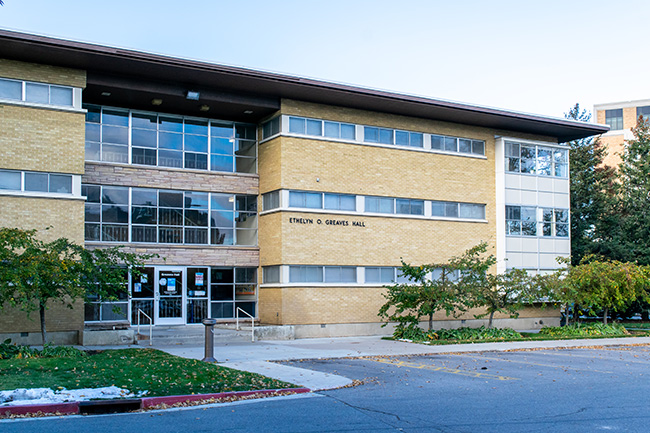
After graduating from the Agricultural College of Utah with a bachelor’s of home economics in 1920, Ethelyn Oliver Greaves became the first woman in ACU history to earn a master’s. She later went on to earn a doctorate from the University of California-Berkeley.
Unable to hold a position on the ACU staff due to anti-nepotism rulings, Ethelyn went on to a career that included serving as associate director of Utah’s Rehabilitation of Resettlement Administration, as state director of the Farm Security Administration, and as chair of the Home Economics Department at the University of Utah.
With the retirement of her husband, Ethelyn returned to the ACU in 1945 as the dean of Home Economics and as head of the Foods and Nutrition Department.
Moen Hall (1900-1990)
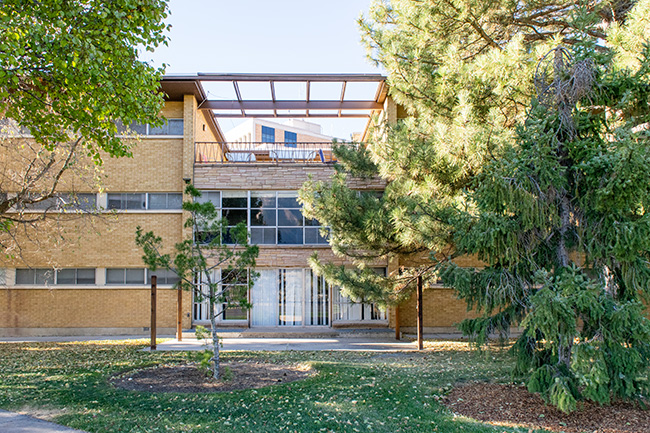
A Norwegian immigrant, Johanna Moen joined the Agricultural College of Utah (ACU) faculty in 1919.
During her time at ACU, Johanna was considered the primary builder of the institution’s impressive Clothing and Textiles Department; she also served as acting dean on Home Economics in 1931.
In her twenty years at the college, students recalled Johanna’s kindness and the fact that she never lost her Scandinavian accent.
Johanna was awarded an honorary doctorate in 1950 for her contributions to the campus community.
Reeder Hall
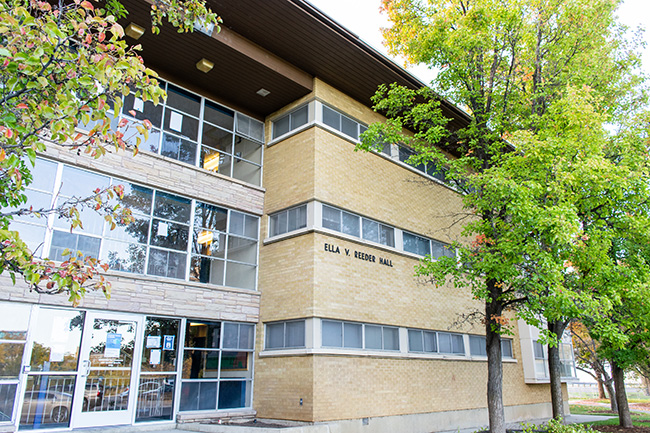
Ella V. Reeder spent many years in public service to the Utah State University campus and the Cache Valley community, where she served as a leader of women’s affairs in the Utah State Farm Bureau Federation, as a member of the Utah State Agricultural College Board of Trustees, in the Utah State Women’s Legislative Council and as a mentor in local 4-H activities.
In recognition of her service, Ella was awarded an honorary doctorate in 1953.
Smart Gymnasium
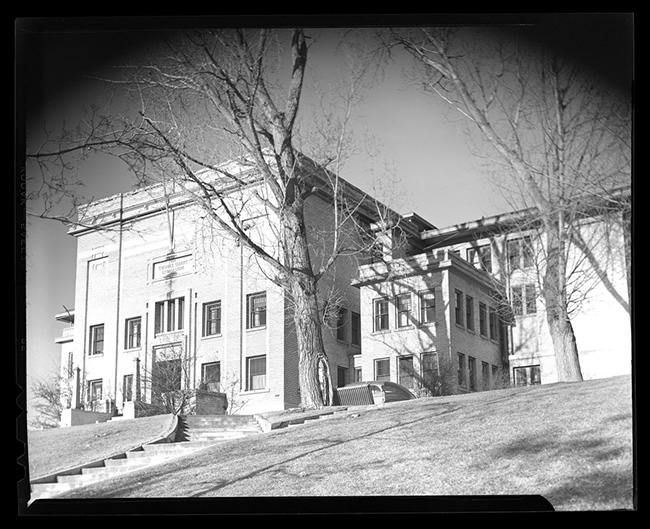
In 1912, Utah Agricultural College (now Utah State University) Board of Trustees member Thomas Smart donated funds to construct a college gymnasium.
The Smart Gymnasium offered exercise facilities for UAC student body, including a heated pool. More importantly, the facility provided a home for Aggie basketball, previously relegated to leasing facilities at its chief local rival, the Brigham Young College. Razed in 1969, the Smart Gym became a parking lot until construction of the Living Learning Community, a cluster of student housing.
Harris Athletic Center
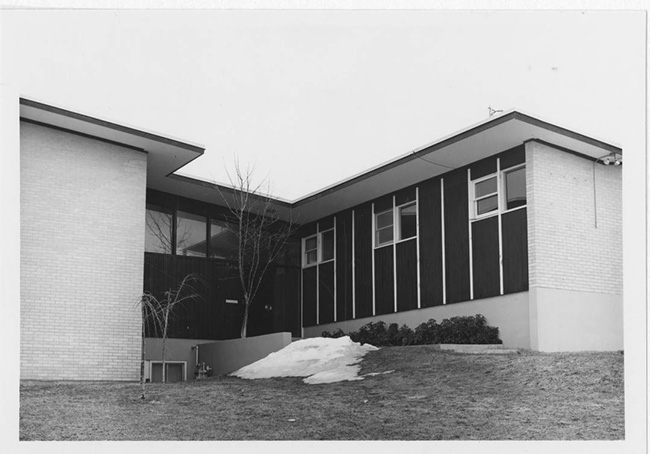
Jay Dee Harris was born April 25, 1917, in Tremonton, Box Elder County, Utah to Joseph Daniel and Mary Maria Waldron Harris, the youngest of nine children. He started his business career early when he was assigned to run the family-owned gas station at the age of 14. Jay Dee would open the station every morning, run it until one of the bus drivers came to relieve him so he could go to school, and, after finishing up for the day with athletics, he would return to the station and work until closing. He loved sports and lettered in tennis, basketball and track. Jay Dee was a pole vaulter and held the state and region record at the time of his graduation. His region record stood for 27 years.
After marrying Alice Christopherson, Jay Dee sold and delivered wholesale gas to the farmers in the Cache Valley area. He did not consider them customers, but special friends. He went into the truck and automobile dealership business and, from there, moved on to large construction equipment. He owned and operated Harris Truck & Equipment, the largest equipment sales and leasing company in the western United States.
Jay Dee served on the Board of Trustees for Utah State University. He was on the State Board of Regents for all of Utah’s universities and colleges and was on the Board of Fellows for Southern Utah University. He received two honorary doctorates.
E.G. Peterson Building
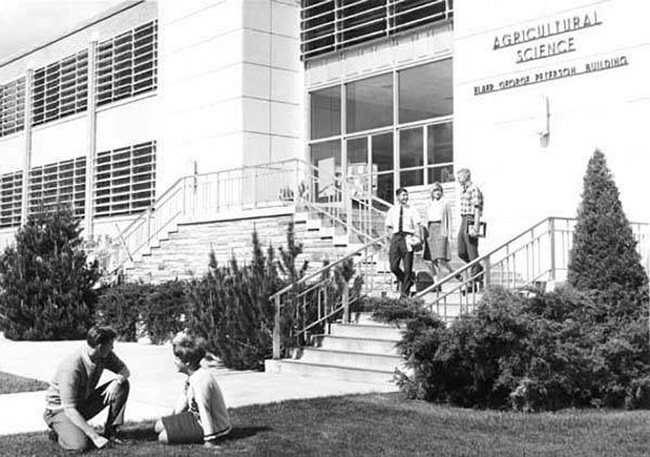
Although the on-campus barns relocated in the 1950s, the on the Utah State Agricultural College (now Utah State University) campus retained its agricultural heritage through the E.G. Peterson Agricultural Science Building. The building opened for classes in 1957 and housed the College of Agriculture, along with the Experiment Station and Extension Services until 2010. The facility was demolished in 2012. The Life Sciences Building, completed in 2019, occupies the location of the former Agricultural Science Building.
E.G. Peterson was appointed to the office of university president in 1916. A native of Utah, Peterson was born at Plain City. After graduating from the college in 1904, he studied at the University of Chicago and later earned a doctorate from Cornell. Peterson attended USAC during the presidency of William J. Kerr, who had since taken the presidency at the Oregon State Agricultural College. After Peterson’s graduation from Cornell, Kerr offered him an appointment in bacteriology, which he accepted in 1910. Two years later Peterson returned to Utah to become director of Extension at USAC.
After four years as director of Extension, Peterson was elected president of the institution. He became the first graduate of the college to become president, and, at age 34, the youngest chief executive at a land-grant college in the United States.
Kent Concert Hall
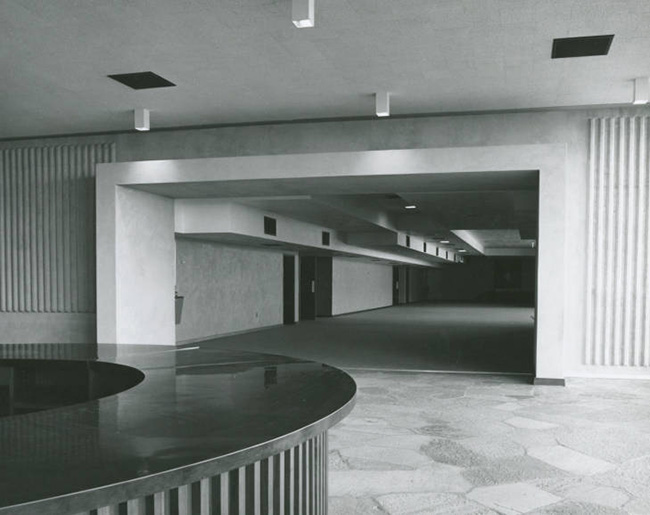
Named for distinguished alums Melvin Lloyd and Editha Smith, the Kent Concert Hall was located in the Chase Fine Arts Center. A dedication was held November 21, 1974.
Melvin was widely known as a skilled physician and an outstanding citizen. What generally is not known is the magnitude of his contributions to organizations and worthy causes and his anonymous gifts to those in need.
Melvin met Editha, who was studying home economics, at the Utah Agricultural College (now Utah State University) in the physics lab in 1924. They married in December 1927 while Melvin studied medicine at the University of Utah.
An accomplished pianist, Melvin earned his way through school playing in dance bands and orchestras.
David O. McKay Student Living Center
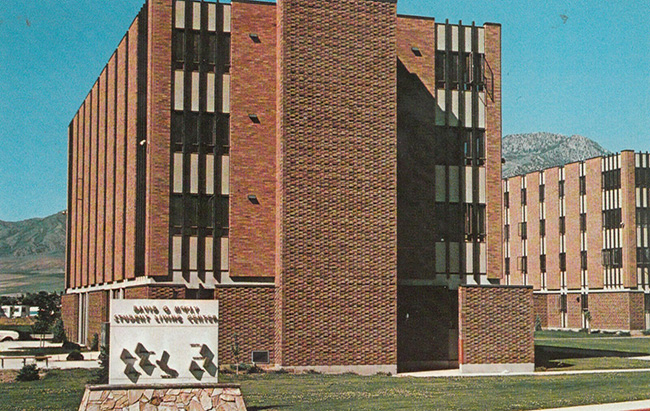
In 1962, the Church of Jesus Christ of Latter-day Saints built and managed the David O. McKay Student Living Center. The facility catered to Utah State University’s LDS student body and included both men’s and women’s dormitories. The university acquired the so-called “Morm Dorms” during the 1980s.
The complex retained the Student Living Center name, although each building was subsequently renamed. Seven of the buildings bear the names of Utah Counties. One wing was named in honor of university benefactor Emma Eccles Jones and another was dedicated as Lundstrom Hall after former Dean of Women Helen Lundstrom in 1981. In 1986, Lundstrom Hall was designated as co-educational for Honors students, who were expected to comply with “responsible” community standards.
Anthon H. Lund Hall
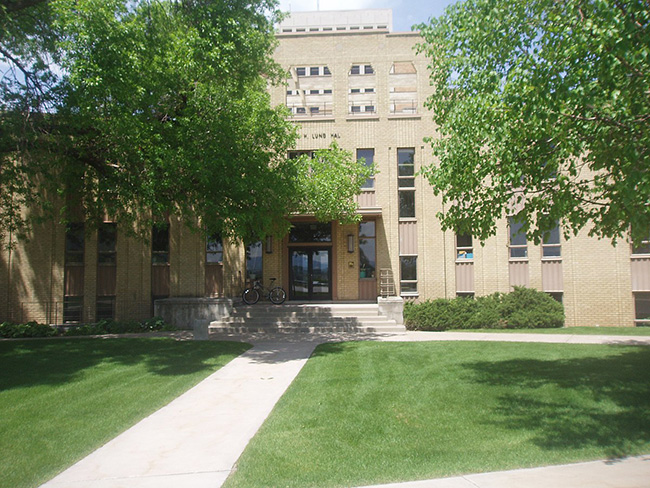
Not since the Women’s Residence Hall was constructed in 1892 had the Utah State Agricultural College provided a building solely for the purpose of housing students. Most students rented rooms or boarded with Logan families. A 1936 study found an “astonishing lack of standardization in prices paid by students for similar accommodations,” and recommended that a director of housing be appointed to work with landlords to ensure that accommodations were adequate for the student body.
The college used federal funds, however, to erect Lund Hall, a single women’s dormitory, in 1938. Named posthumously for Anthon H. Lund, the often heralded “father” of the college, the dormitory opened the same year the institution celebrated its semi-centennial. Lund Hall served various purposes since its construction as a dormitory. Student athletes occupied its rooms during the 1970s. In 1986, the building was placed on the National Historic Register. Its last tenant was the Department of Mathematics and Statistics, which moved out of Lund Hall in 2012. During 2012, Landmark Consultants performed a historic survey on Lund Hall in preparation for having it removed from the National Historic Register. In April 2013, Lund Hall was razed to make room for the newly configured Huntsman School of Business.
Frances Winton Champ Carillon Bell Room
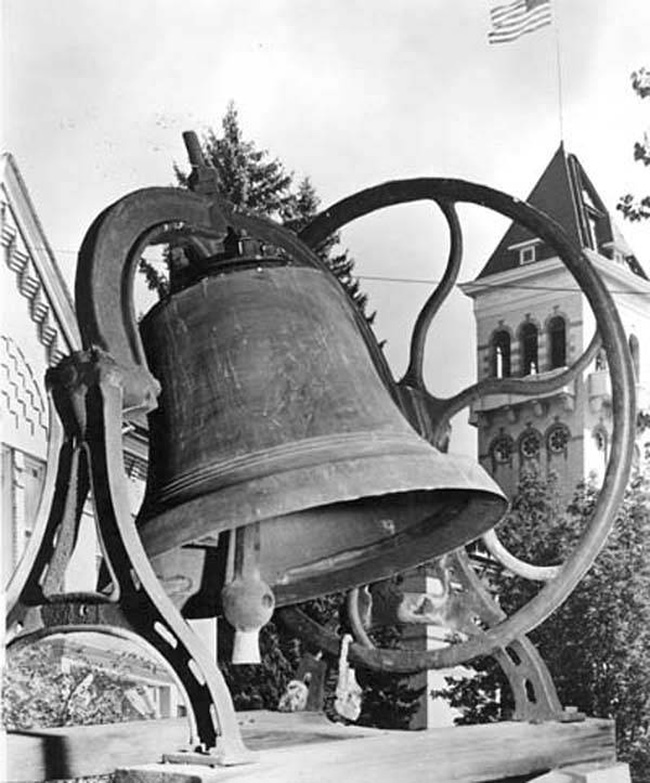
The original bells or chimes were installed in the Old Main Tower in 1914 and 1915, and came as a result of senior class gifts. These hand-rung bells replaced the original single bell that was installed in 1904, immediately after completion of the center-tower section of Old Main.
The chimes persisted until replaced in 1978 by the present carillon bell. Presented to the university by the family of businessman and former Board of Trustee President Frederick P. Champ, the carillon was named in honor of Frances Winton Champ (1939), Frederick’s wife. The Verdin Carillon is an electronic device designed to simulate the ringing of bells. The room which houses the carillon was officially designated the Frances Winton Champ Carillon Bell Room on March 3, 1995.
The original bell now hangs on the north side of the Dee Glen Smith Spectrum.
Joel Ricks Seminar Room
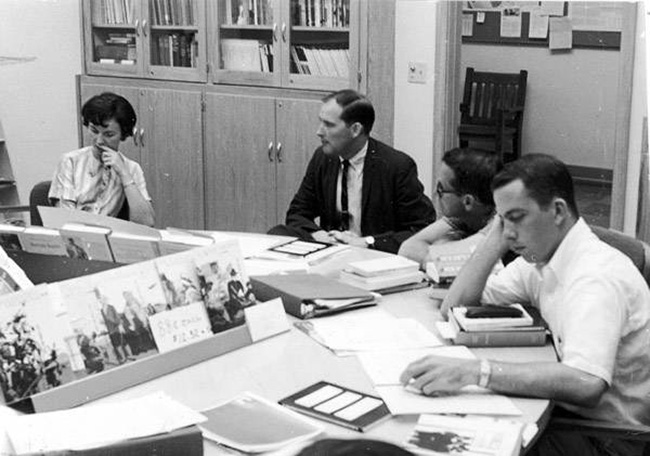
Dr. Joel Ricks had a long and important career as both an historian and educator. Between 1922 and the late 1960s, Ricks taught in the History Department, often serving as its head at the then Utah Agricultural College, later as the Utah State Agricultural College, and finally as Utah State University.
As an ardent supporter of the Sons of Utah Pioneers organization and an active member of the Utah State Historical Society, Ricks published a wealth of materials on the history of Cache Valley, Utah, and the region.
Jeffrey D. Clark Center for Entrepreneurship
Five years after Utah State University officials rewarded an alum for a donation by naming a center within the Jon M. Huntsman School of Business after him, Jeffrey Clark and the Center for Entrepreneurship are no longer synonymous. When Clark, a USU alum and hedge fund manager, and his wife, Bonnie pledged $6 million in 2013, the center became known as the Jeffrey D. Clark Center for Entrepreneurship. In later years, Michael Glauser, executive director of the center and Clark came to an agreement to remove Clark’s name form the center. Clark, who graduated with an accounting degree from USU in 1982, did not completely disappear from the center as he helped fund USU’s Small Enterprise Education and Development, or SEED, program. SEED allows Huntsman School students to travel abroad to impoverished countries and teach local residents business principles.
Romney Stadium
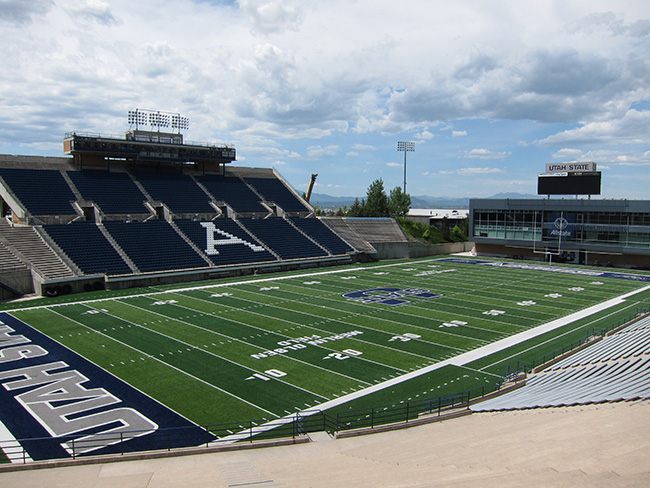
In 1926, Board of Trustees members Frederick P. Champ and Olof Nelson formed the Utah Agricultural College (now Utah State University) Building Committee and raised funds for a new football stadium located at the corner of 800 East and 700 North on the institution’s campus in Logan. A decade later, the federal government, through the Works Progress Administration (WPA), provided $30,000 in Depression Era funding to design and build a stadium house. The addition not only provided living quarters for student-athletes, but also created a portal entry into the stadium for student fans and community spectators.
Guided by Coach E. L. “Dick” Romney, the Aggies fielded some of their most successful teams during the 1930s, including the 1936 Rocky Mountain Conference championship team spirited by first team All-American halfback Kent Ryan. In 1954, the Board of Trustees resolved to name the football stadium in Romney’s honor.
In 1966, the university built a new Romney Stadium, north of the original, demolishing the former venue. The Health, Physical Education, and Recreation (HPER) Building occupied part of the vacant space in 1970. The adjacent HPER Field utilized the rest. The Aggie Recreation Center (2015) currently stands at the site of the old Romney Stadium. In 2009, the university named the field at Romney Stadium in honor of USU alum and All-American and All-Pro tackle Merlin Olsen. Six years later, the university brokered a deal with the convenience store chain Maverik Inc. to rename the venue Maverik Stadium.
Joseph E. Greaves Microbiological Laboratories
Joseph Eames Greaves was born November 2, 1880 to Joseph Cluely Greaves and Catherine Mary Eames. He was born and raised in Logan, Utah. In 1884, when young Joseph was four-years-old, his father died after a quarry accident while cutting stones for the Logan Utah Temple.
His mother raised three children, including Joseph, alone. She taught them the value of education, and Joseph Greaves was the first in the family to receive higher education, graduating from Utah State Agricultural College in 1904.
Joseph married Pernecy Jane Dudley on June 10, 1907. Together they had five children. The 1918 influenza pandemic took the life of Pernecy. Joseph spent much of the remainder of his career researching germs and fighting infectious disease. He exercised bold leadership in the face of much opposition, as few people believed that diseases could come from germs, which are invisible. In 1929, Joseph prevented a typhoid fever epidemic in Brigham City, Utah.
Joseph was a respected and influential academic leader during his 38 years at Utah State University, with much of his time spent as department head. He established his legacy at USU by*Note: All bios are current and up-to-date as of Summer 2022.

